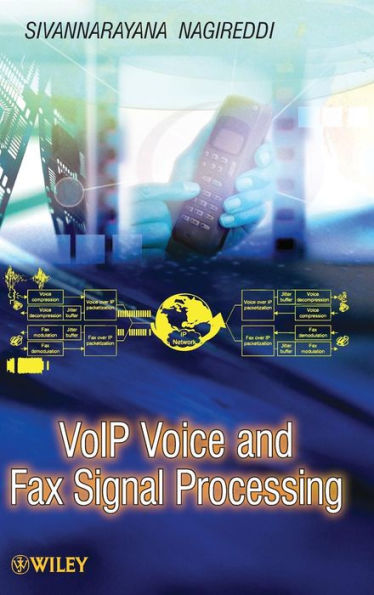This book presents a consolidated view and basic approach to signal processing for VoIP voice and fax solutions. It provides readers with complete coverage of the topic, from how things work in voice and fax modules, to signal processing aspects, implementation, and testing. Beginning with an overview of VoIP infrastructure, interfaces, and signals, the book systematically covers:
- Voice compression
- Packet loss concealment techniques
- DTMF detection, generation, and rejection
- Wideband voice modules operation
- VoIP Voice-Network bit rate calculations
- VoIP voice testing
- Fax over IP and modem over IP
- Country deviations of PSTN mapped to VoIP
- VoIP on different processors and architectures
- Generic VAD-CNG for waveform codecs
- Echo cancellation
- Caller ID features in VoIP
- Packetization—RTP, RTCP, and jitter buffer
- Clock sources for VoIP applications
- Fax operation on PSTN, modulations, and fax messages
- Fax over IP payload formats and bit rate calculations
- Voice packets jitter with large data packets
- VoIP voice quality
Over 100 questions and answers on voice and more than seventy questions and answers on fax are provided at the back of the book to reinforce the topics covered throughout the text. Additionally, several clarification, interpretation, and discussion sections are included in selected chapters to aide in readers' comprehension.
VoIP Voice and Fax Signal Processing is an indispensable resource for professional electrical engineers, voice and fax solution developers, product and deployment support teams, quality assurance and test engineers, and computer engineers. It also serves as a valuable textbook for graduate-level students in electrical engineering and computer engineering courses.
This book presents a consolidated view and basic approach to signal processing for VoIP voice and fax solutions. It provides readers with complete coverage of the topic, from how things work in voice and fax modules, to signal processing aspects, implementation, and testing. Beginning with an overview of VoIP infrastructure, interfaces, and signals, the book systematically covers:
- Voice compression
- Packet loss concealment techniques
- DTMF detection, generation, and rejection
- Wideband voice modules operation
- VoIP Voice-Network bit rate calculations
- VoIP voice testing
- Fax over IP and modem over IP
- Country deviations of PSTN mapped to VoIP
- VoIP on different processors and architectures
- Generic VAD-CNG for waveform codecs
- Echo cancellation
- Caller ID features in VoIP
- Packetization—RTP, RTCP, and jitter buffer
- Clock sources for VoIP applications
- Fax operation on PSTN, modulations, and fax messages
- Fax over IP payload formats and bit rate calculations
- Voice packets jitter with large data packets
- VoIP voice quality
Over 100 questions and answers on voice and more than seventy questions and answers on fax are provided at the back of the book to reinforce the topics covered throughout the text. Additionally, several clarification, interpretation, and discussion sections are included in selected chapters to aide in readers' comprehension.
VoIP Voice and Fax Signal Processing is an indispensable resource for professional electrical engineers, voice and fax solution developers, product and deployment support teams, quality assurance and test engineers, and computer engineers. It also serves as a valuable textbook for graduate-level students in electrical engineering and computer engineering courses.

VoIP Voice and Fax Signal Processing
592
VoIP Voice and Fax Signal Processing
592Hardcover

